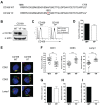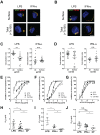CD169-mediated trafficking of HIV to plasma membrane invaginations in dendritic cells attenuates efficacy of anti-gp120 broadly neutralizing antibodies
- PMID: 25760631
- PMCID: PMC4356592
- DOI: 10.1371/journal.ppat.1004751
CD169-mediated trafficking of HIV to plasma membrane invaginations in dendritic cells attenuates efficacy of anti-gp120 broadly neutralizing antibodies
Erratum in
-
Correction: CD169-Mediated Trafficking of HIV to Plasma Membrane Invaginations in Dendritic Cells Attenuates Efficacy of Anti-gp120 Broadly Neutralizing Antibodies.PLoS Pathog. 2015 May 7;11(5):e1004916. doi: 10.1371/journal.ppat.1004916. eCollection 2015 May. PLoS Pathog. 2015. PMID: 25950184 Free PMC article. No abstract available.
Abstract
Myeloid dendritic cells (DCs) can capture HIV-1 via the receptor CD169/Siglec-1 that binds to the ganglioside, GM3, in the virus particle membrane. In turn, HIV-1 particles captured by CD169, an I-type lectin, whose expression on DCs is enhanced upon maturation with LPS, are protected from degradation in CD169+ virus-containing compartments (VCCs) and disseminated to CD4⁺ T cells, a mechanism of DC-mediated HIV-1 trans-infection. In this study, we describe the mechanism of VCC formation and its role in immune evasion mechanisms of HIV-1. We find HIV-1-induced formation of VCCs is restricted to myeloid cells, and that the cytoplasmic tail of CD169 is dispensable for HIV-1 trafficking and retention within VCCs and subsequent trans-infection to CD4⁺ T cells. Interestingly, introduction of a di-aromatic endocytic motif in the cytoplasmic tail of CD169 that results in endocytosis of HIV-1 particles, suppressed CD169-mediated HIV-1 trans-infection. Furthermore, super-resolution microscopy revealed close association of CD169 and HIV-1 particles in surface-accessible but deep plasma membrane invaginations. Intriguingly, HIV-1 particles in deep VCCs were inefficiently accessed by anti-gp120 broadly neutralizing antibodies, VRC01 and NIH45-46 G54W, and thus were less susceptible to neutralization. Our study suggests that HIV-1 capture by CD169 can provide virus evasion from both innate (phagocytosis) and adaptive immune responses.
Conflict of interest statement
I have read the journal's policy and the authors of this manuscript have the following competing interests: MVG is an employee at Bruker Nano Surfaces. This does not alter our adherence to all PLOS policies on sharing data and materials.
Figures







References
-
- Banchereau J, Steinman RM (1998) Dendritic cells and the control of immunity. Nature 392: 245–252. - PubMed
Publication types
MeSH terms
Substances
Grants and funding
LinkOut - more resources
Full Text Sources
Other Literature Sources
Medical
Research Materials

